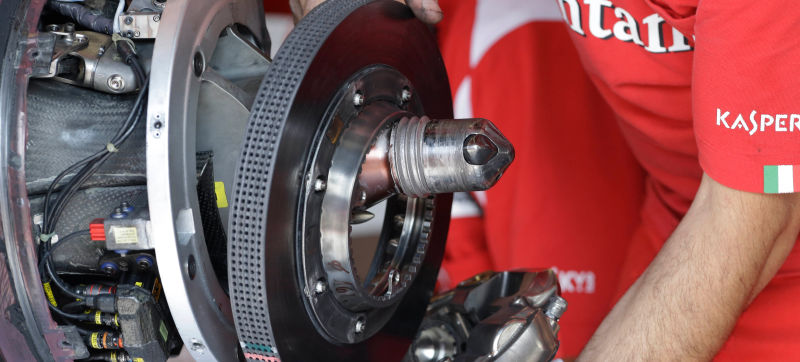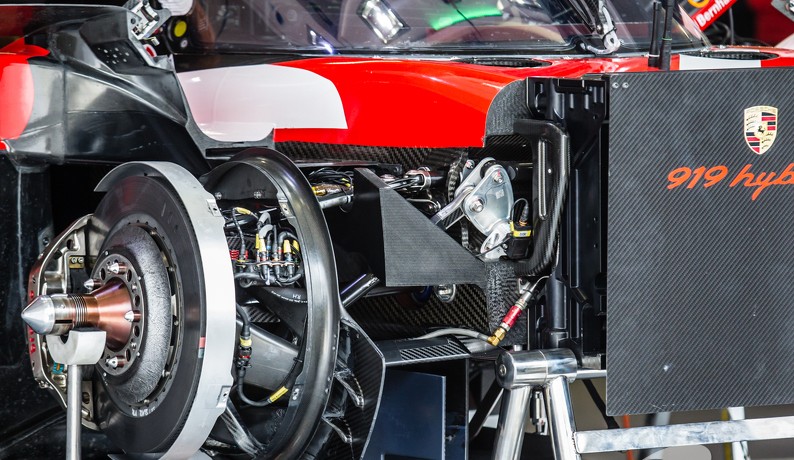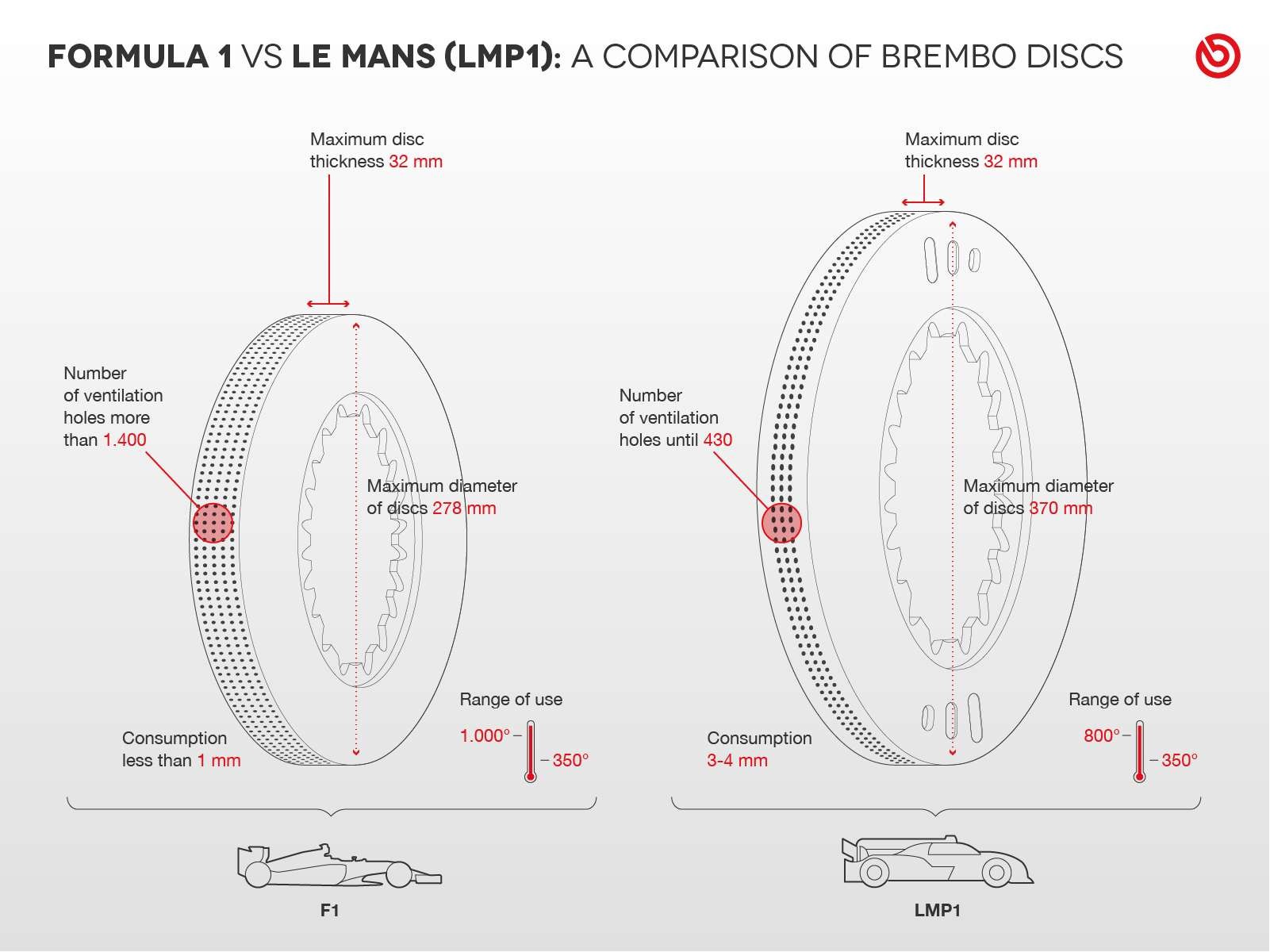
Formula 1 is the pinnacle of single-seat open-wheel racing, and LMP1 is the highest class in Le Mans sports prototype racing. They are both incredible fast. And that begs the question: who has the biggest… brakes?
The size of the brake depends a lot on the intended use of a braking system. A Formula 1 car has to race at near-full speed for a maximum of two hours, whereas a LMP1 has to race for much longer; from 6 hours in most races to 24 hours in the famous 24 Hours of Le Mans. F1 cars race in shorter tracks than LMP1 cars, so it accelerates and decelerates much more, and with higher G-forces. The maximum deceleration of an F1 car is five G, compared to 3.5 F in a LMP1. Another factor is temperature. In a relatively short Formula 1 race, the brakes need to stay as cool as possible, all the time. But in a much longer LMP1 race, brakes shouldn’t cool down too much. This is especially important in night races, where cooler weather has a direct influence on the brake temperature.

An F1 brake can thus be configured for maximum short-time performance, while a LMP1 brake has to be deigned for performance and durability. But that is not all; technical requirements are not the only thing brake developers have to worry about. There is also this nagging little thing called ‘the rules’. Formula 1 and LMP1 are overseen by the Fédération Internationale de l’Automobile (FIA), but the rules couldn’t be more difference. For example; the maximum size of F1 wheels is 13 inches, while wheels in LMP1 can go up to 18. The bigger the wheel, the bigger the brake that you can fit.
So who has the biggest brake discs?

Brake discs in F1 and LMP1 each have a thickness of 32 mm, but it is the diameter that matters most. Here LMP1 is a clear winner with 370 mm over 278. However, F1 brakes are stronger and wear out slower. Their superior number on ventilation holes means they have a larger range of temperature use. So when it comes to size alone LMP1 wins. But what if they would race..?
In a hypothetical race between a F1 car and a LMP1 car on Le Mans, the F1 brakes would easily beat the LMP1 for the first 500 kilometers, or about 1/8 of the total race distance of the 24 Hours of Le Mans. After that, the larger and ‘warmer’ LMP1 brakes would take over, and win the race. On a shorter F1 track however, an LMP1 wouldn’t stand a chance.